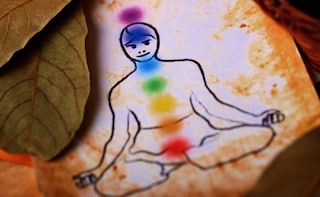Ayurveda is a Sanskrit word that refers to the 'science of life and longevity'. Ayurveda adopts a holistic approach towards healthy living and is considered to be one of the oldest medicinal systems in the world. Though native to India, this philosophy has gained popularity all around the world. The base of Ayurvedic philosophy is to balance the body, mind and spirit. Both prevention and healing are carried out through natural means.
The Three Doshas: An Overview1. Vata: Vata is considered as the leader of the three Ayurvedic principles in the body. As the principle of mobility, Vata regulates all activity in the body, mental as well as physiological. It is responsible for breathing, blinking our eyes, beating of our heart and many more functions. When in balance, the Vata is lively and energetic. Adequate rest and relaxation is needed to keep the vata in balance. Dry skin, cough and dry hair are some problems that one may face when the vata is imbalanced.
The Three Doshas: An Overview1. Vata: Vata is considered as the leader of the three Ayurvedic principles in the body. As the principle of mobility, Vata regulates all activity in the body, mental as well as physiological. It is responsible for breathing, blinking our eyes, beating of our heart and many more functions. When in balance, the Vata is lively and energetic. Adequate rest and relaxation is needed to keep the vata in balance. Dry skin, cough and dry hair are some problems that one may face when the vata is imbalanced.
Advertisement
Advertisement
Advertisement
Balancing Vata: High consumption of spicy and astringent foods contributes to vata imbalance. Hence, a peace-making diet with salty, sweet and sour tastes and warm, moist and easily digestible foods is recommended. This includes vegetables like broccoli, leafy vegetables and cauliflower, wheat and rice, mild spices like cumin, ginger and cinnamon. In addition, moist foods like berries, melons, and yogurt can help counter-balance vata’s dry quality as can other hydrating cooked foods such as soups or stews. Oily foods like avocado, buttermilk, cheese, eggs, whole milk, coconut, nuts and seeds are supportive as well. Dr. Tyagi suggests that people with Vata prakriti should have slightly fatty foods and drink warm milk at night.
Balancing Pitta: Excessive consumption of alcohol and spicy, oily, fried, salty and fermented foods may result in pitta imbalance. Dr. Tyagi agrees that pitta prakriti should avoid very spicy, acidic or hot foods. Pitta balance can be restored with sweet, bitter and astringent tastes and heavy, cool foods such as sweet fruits, dairy products, curry leaves, barley, oats and mint. Avoid sour fruits, red meat, potatoes, tomatoes, and eggplant.
Dr. Tyagi suggests that irrespective of what your prakriti is, you must always eat your food on time, the ingredients should be seasonal and your meals should have a balance of all the nutrients required by your body to maintain good health and well-being. Disclaimer:The opinions expressed within this article are the personal opinions of the author. NDTV is not responsible for the accuracy, completeness, suitability, or validity of any information on this article. All information is provided on an as-is basis. The information, facts or opinions appearing in the article do not reflect the views of NDTV and NDTV does not assume any responsibility or liability for the same.
Balancing Pitta: Excessive consumption of alcohol and spicy, oily, fried, salty and fermented foods may result in pitta imbalance. Dr. Tyagi agrees that pitta prakriti should avoid very spicy, acidic or hot foods. Pitta balance can be restored with sweet, bitter and astringent tastes and heavy, cool foods such as sweet fruits, dairy products, curry leaves, barley, oats and mint. Avoid sour fruits, red meat, potatoes, tomatoes, and eggplant.
Dr. Tyagi suggests that irrespective of what your prakriti is, you must always eat your food on time, the ingredients should be seasonal and your meals should have a balance of all the nutrients required by your body to maintain good health and well-being. Disclaimer:The opinions expressed within this article are the personal opinions of the author. NDTV is not responsible for the accuracy, completeness, suitability, or validity of any information on this article. All information is provided on an as-is basis. The information, facts or opinions appearing in the article do not reflect the views of NDTV and NDTV does not assume any responsibility or liability for the same.
For the latest food news, health tips and recipes, like us on Facebook or follow us on Twitter and YouTube.
Advertisement
